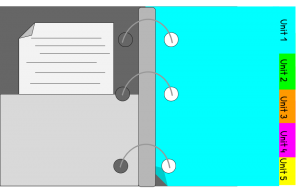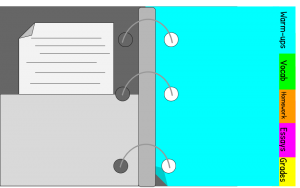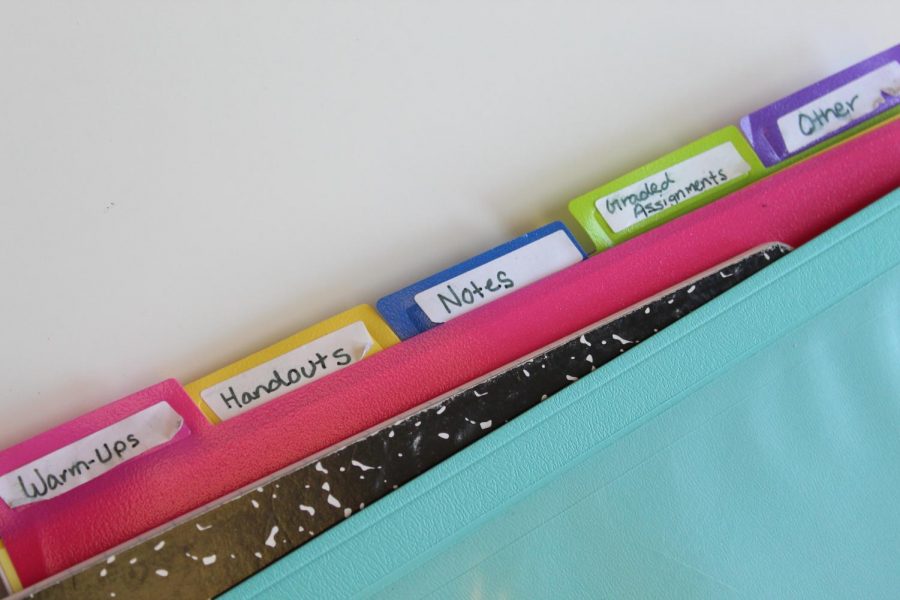Binder Organization
Most high schoolers use three-ring binders with dividers for their classes. These are great if used correctly; just clipping papers inside them won’t work. Buying reusable dividers and organizing papers by subject will give purpose to the binders and help make it easier to find papers. There are two main ways to organize a binder:
1. By unit

This method is useful for systematic subjects such as math, science, and (at times) social studies. Many math and science teachers have clear units set in place, and they build on the previous units. In this case, it helps to label all dividers by the unit. This makes studying for finals and midterms very easy because each binder becomes a flipbook of the whole year. Also, having all the information for one unit together is useful if the future units depend on it or use information from it. For example, you could keep all the information on circles in one unit section and then put the unit on conics after it. A binder organized this way would look like this:
2. By category

This method is useful for more flexible classes such as ELA or a foreign language. These classes depend more on enhancing and honing a learned skill and not so much chopping up the year into defined units. For example, in Honors 10th grade Literature, the classes follow a schedule of reading prompts, quizzes, and essays. In this scenario, labeling a binder by the type of handout makes more sense. A setup may include one divider for graded assignments, one for homework, one for warm-ups, and a fourth for miscellaneous papers. This setup takes a little more effort because it isn’t a cookie-cutter method and is specific to the class. However, it will make the process of organizing very simple. Elijah Tagaan, a senior at South Forsyth, uses the latter method to organize his binders.
